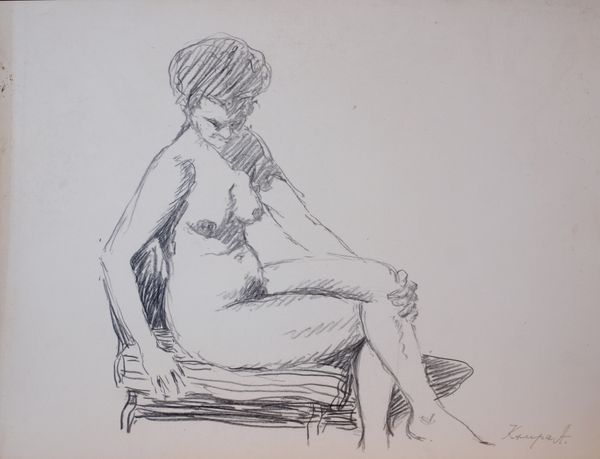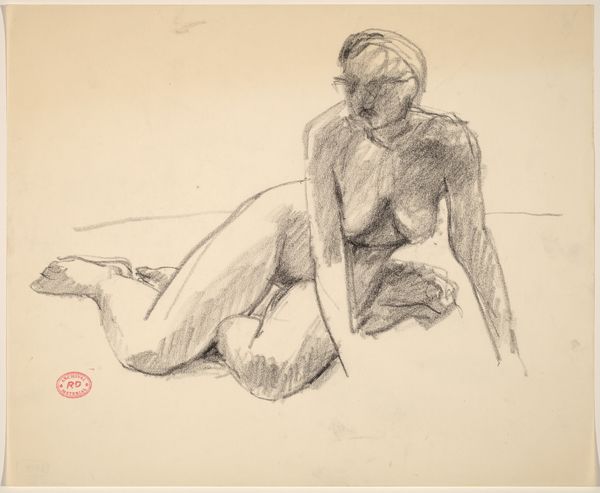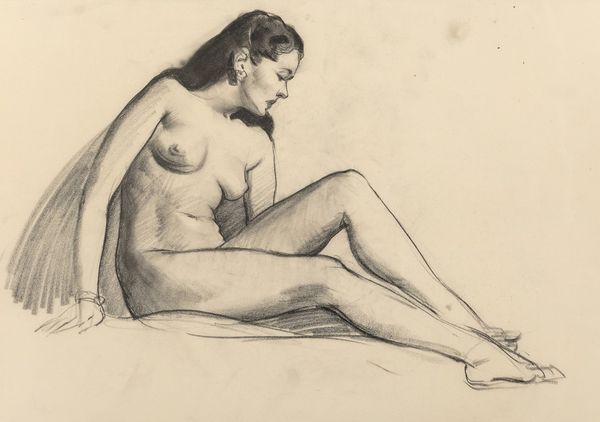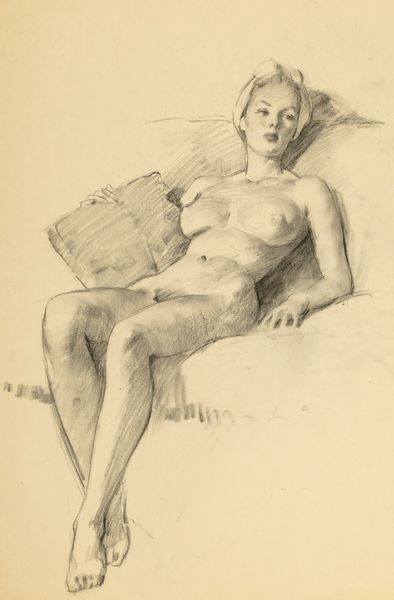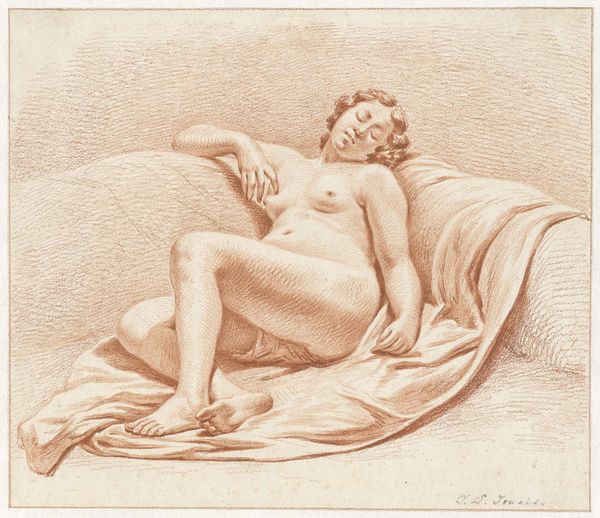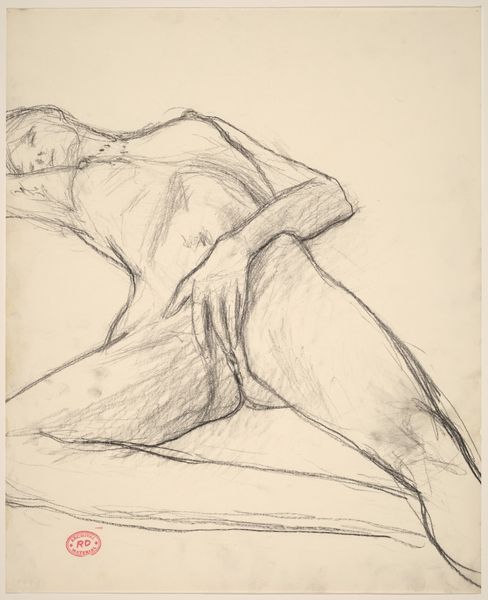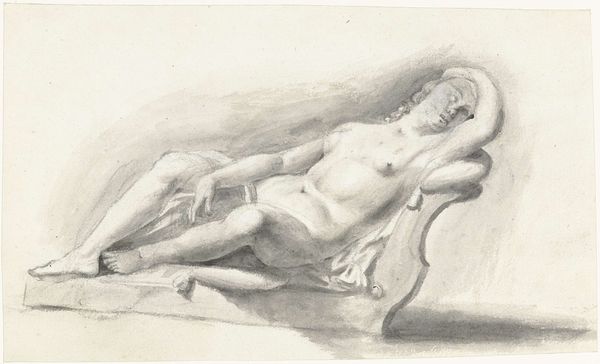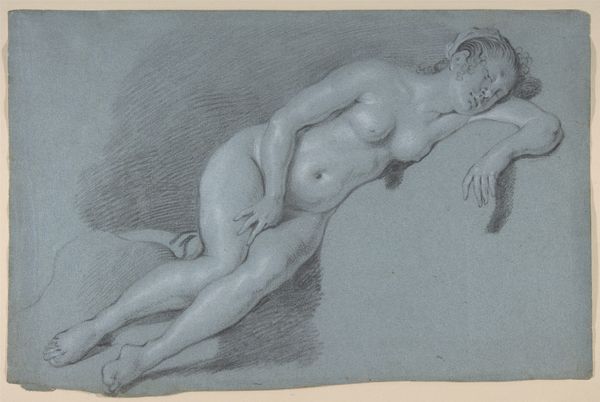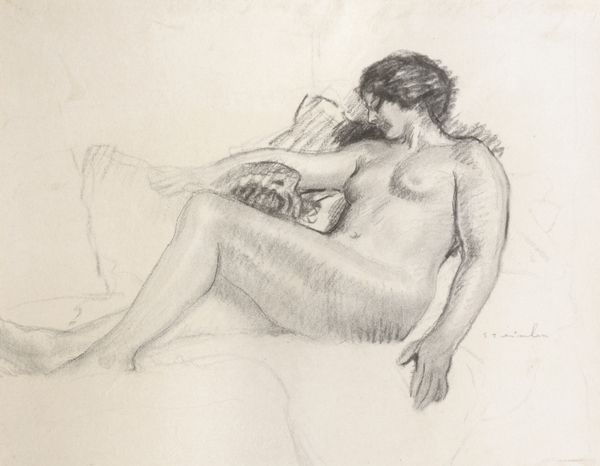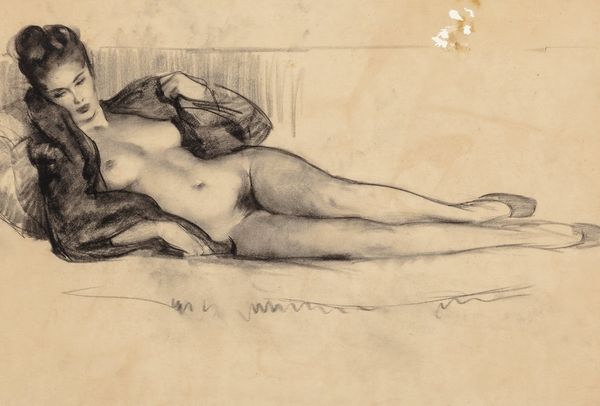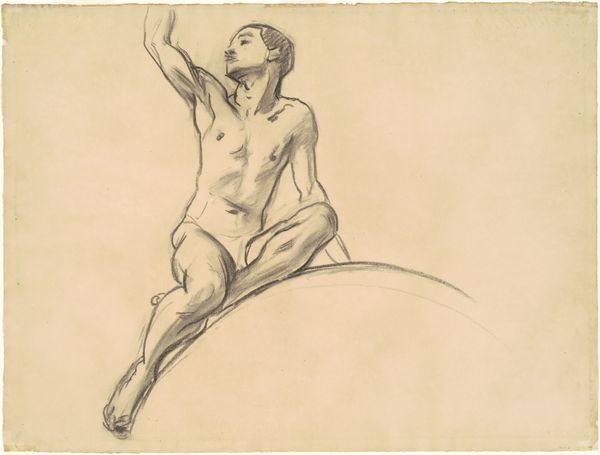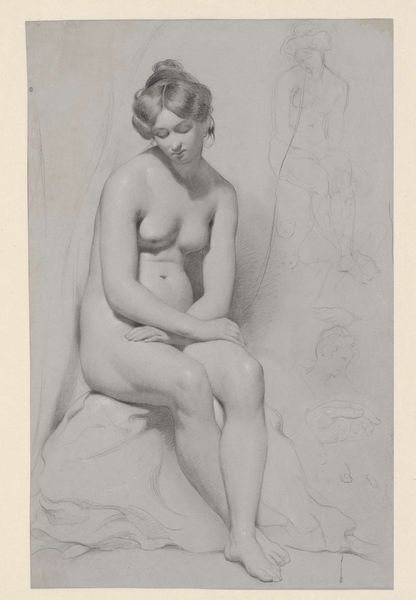
drawing, pencil
#
portrait
#
pencil drawn
#
drawing
#
facial expression drawing
#
light pencil work
#
pencil sketch
#
charcoal drawing
#
portrait reference
#
pencil drawing
#
pencil
#
animal drawing portrait
#
portrait drawing
#
pencil work
#
nude
#
realism
Dimensions: 177 mm (height) x 238 mm (width) (bladmaal)
Curator: This drawing is titled “Liggende kvindelig model”, or “Reclining Female Model”, by Hans Smidth, dating from the 1860s, and it's currently held at the SMK, the National Gallery of Denmark. Editor: It's interesting how a seemingly simple pencil sketch can convey so much. I’m struck by the pose—casual yet melancholic, all in grayscale. The texture and dimensionality achieved with the pencilwork is skillful. Curator: Absolutely. Nudes in art carry so much baggage. Here, the averted gaze speaks to a certain internal psychological state, a common theme with figures like this one, and how they choose not to confront the gaze directed at them, laden with projections and objectification. Editor: Precisely, but note the absence of idealization. The composition focuses on structure—the stark juxtaposition between light and shadow that lends such weight to her limbs and features. We can think about how realism functioned as a social strategy as Courbet theorized. Curator: That weight feels intentional. We can feel that she is on a heavy chair, couch, or mattress. The choice of pose and composition might subtly question or even challenge the prevailing ideas about female beauty at the time, maybe not intentionally, but there may be something there. The art historical roots and symbolism that permeate nude female figures makes the work stand out. Editor: Her arm supports her head with such intentionality, no? What I love is how it balances with her leg extending toward the picture plane; the structural integrity holds the image together. The overall composition certainly invites further analysis into the underlying structures that govern visual representation. Curator: It reminds us that the stories we tell visually are constructed. Editor: Indeed. We might find the historical underpinnings inform us now in fresh, new ways.
Comments
No comments
Be the first to comment and join the conversation on the ultimate creative platform.


